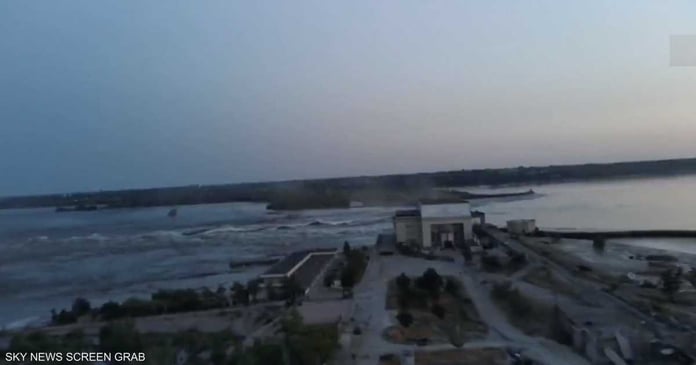Videos taken from both sides of the Dnipro River, which Ukraine and Russia share control of, where the reservoir once stood, showed scattered skulls, including one inside a helmet dating from the Second World War.
Britain’s ‘The Guardian’ newspaper said the footage could not be independently verified due to fighting in the area.
But historians say some of the remains may belong to people who died in a huge battle that took place 80 years ago at the same site, which is currently witnessing a Ukrainian offensive against Russian forces, in particular around Nikopol, Kamyanka and Dniprovska.
violent date
The Battle of the Dnieper (or the Dnieper in the Russian version) was at the center of one of the greatest military operations of World War II, as it witnessed the Soviet army’s counterattack on the German army, in which more than 6 million soldiers took part. . In late 1943, the focus was on Nikopol, on the right bank of the river, the site of the ore mines that the late Nazi leader Adolf Hitler was determined to keep. Today, Nikopol is a Ukrainian-controlled frontline town, overlooking the mudflats that flooded the reservoir and the Dnipro, the Russian-controlled town of Kamyanka-Dniprovska, and the Zaporizhia nuclear power plant. At the end of 1943, the Wehrmacht (Germany’s armed forces between 1935 and 1945) struggled to stand up to the forces of the Soviet Southwestern Front, commanded by Marshal Rodion Malinovsky, and was forced to abandon the city in February 1944. Historian at the National Museum of History of Ukraine during World War II Andrey Solonets He said: “The losses of the Soviet forces were between 30,000 and 60,000. The losses of the German and Romanian forces reached 20,000 people.” “So theoretically this helmet and skull video could be related to those events,” Solonets said. Oleksiy Kokot, an expert on German military antiquities in Ukraine, commented: “While the dead soldiers of the (Soviet) Red Army were buried in the ground, the dead German soldiers were left lying in the fields, so that ‘they (the skeletons) could really be German soldiers.’ Many German corpses were left in the swamps, which were then flooded during the construction of the Kakhovka dam in 1956.
Read the Latest World News Today on The Eastern Herald.

